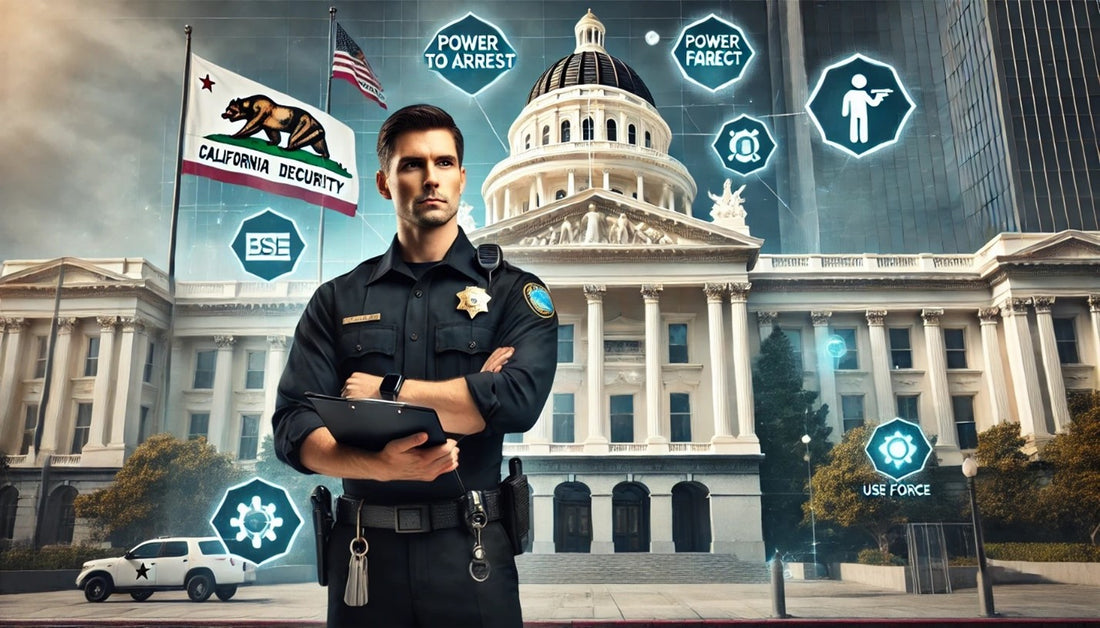New Training Requirements For California Security Guards
Share

If you're looking to start a career as a security guard in California, understanding the new California Guard Card requirements under Assembly Bill 229 (Chapter 697, Statutes of 2021) is crucial. The bill introduces key updates that impact the process of obtaining a Guard Card and advancing to a Level 2 security guard role. This guide will break down what aspiring security guards need to know to meet these updated standards and How to get a Guard Card in California.
Understanding the Guard Card: Your Essential License
A Guard Card is the basic license required to work as a security guard California. Issued by the Bureau of Security and Investigative Services (BSIS), it is necessary for anyone wanting to work in unarmed security positions. The California security guard license consists of:
- Complete 8 hours of training, focusing on Power to Arrest and Weapons of Mass Destruction.
- Submit their application via BSIS, undergo a background check, and complete Live Scan fingerprinting.
Once you obtain a Guard Card, you are qualified to work as an entry-level unarmed security guard. This license is your gateway to employment in various settings, such as retail security, construction sites, and office buildings.
Level 2 Security Guard: The Industry's Informal Term
While "Level 2 security guard" is not an official designation by the state of California, it is often used by security companies to describe unarmed security guards—typically someone who holds a Guard Card. This wording is often employed to elaborate positions of security guards at alphabet level zero versus those of the same rank but higher charge such as firearm baton holders and qualification known as Level 3 guards.
Assembly Bill 229: Key Training Updates
Assembly Bill 229 has made significant changes to the training requirements for security guards, especially those pursuing a Guard Card. The new regulations seek to promote building up and expanding such training by addressing paramount training issues such as the use of force and the protection of civilians. Here are the key updates:
- Power to Arrest and Appropriate Use of Force Training:
The total training time for these courses has been increased to 8 hours.
- 3 hours are allocated to Power to Arrest training in California, and the legal implications of arrest by a security guard and making of an arrest. We at Security Guard School are working to update our courses and will be announcing more updates soon.
- 5 hours focus on the Appropriate use of force in which the correct population of factors is emphasized, other focused tactics like communication or reasonable force rather needed to be exercised when dealing with violent people, or the de-escalation tactics are mainly taught.
Mandatory In-person training ensures future guards acquire basic practical orientation regarding such matters as:
- Force review and forensic analysis
- Conflict resolution through communication and de-escalation
- Active shooter response
- Emphasis on De-escalation: The new training especially focuses on de-escalation training security guards, a paradigm shift in security training aimed at equipping guards with the necessary skills to contain explosive situations without engaging in violence. This is in line with measures being taken across the nation to minimize unnecessary use of force among security officers and law enforcement agents.
- Firearms qualification: For those who want to do more than remain in unarmed positions, Assembly Bill 229 also makes changes to the Firearms Qualification process. Where to become an armed security guard, the individuals are put under more or different training in the use of the arms.
Why This Matters for Aspiring Security Guards
The introduction of Assembly Bill 229 and its enhanced training requirements elevate the bar on security guards in the entire state of California. Such reforms are aimed at ensuring that security practitioners are well prepared for the aspects of the job which include difficult decisions regarding the use of force and active duty, such as active shooter events.
These changes should be observed to meet California’s standards as an aspiring security guard. Whether you're aiming to work as a Level 2 unarmed guard or move toward more specialized roles, ensuring compliance with these new requirements is critical for your success and for public safety.
The Role of BSIS in Compliance
The Bureau of Security and Investigative Services, also known as BSIS, is charged with the responsibility of upholding and executing these training standards. Furthermore, as it regulates the process of licensing, BSIS assures the up-to-date knowledge of the security professionals which in turn helps in the maintenance of professionalism and safety of the security field. Security guards and their employers face disciplinary actions including penalties and revocation of licenses where applicable due to failure to complete all the prescribed and other California security training updates.
How to Get Started
For instance, to start working as a security guard in compliance with Assembly Bill 229, you can apply for a Guard Card through BSIS. The application is also made more convenient as it will be submitted electronically using the BreEZe platform which facilitates the submission of documents for application and their progress tracking.
For further directions on acquiring a Guard Card and further licensing requirements for Armed positions, please refer to the official BSIS web page at bsis.ca.gov.
In doing so, you will be prepared for the security services in California and its changing nature.
Stay updated on changes with the California Guard Card and Security Guard School online security training.
REFERENCE LINKS:
https://securityguardschool.com/
TAGS: assembly bill 229, California guard card requirements, guard card training, level 2 security guard California, BSIS guard card, California security guard license, power to arrest training California, appropriate use of force training, de-escalation training security guards, firearms qualification security guard, how to get a guard card in California, security guard certification California, California security guard training requirements, security guard licensing BSIS, California security training updates
